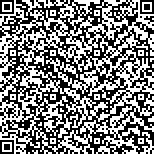下载中心
优秀审稿专家
优秀论文
相关链接
摘要

高光谱成像技术可同时获取地物的几何、辐射和光谱信息,集相机、辐射计和光谱仪能力于一体,相比光学空间二维成像,可对地物进行空间和光谱三维成像,在一定的空间分辨率下,获取宽谱段范围内地物独特的连续特征光谱,对地物的精细分类和识别具有突出的优势,目前已成为对地遥感的重要前沿技术手段,在自然资源调查、生态环境监测、农林牧渔、海洋与海岸带监测等领域发挥着越来越重要的作用。随着高光谱遥感应用的深入研究,对高光谱成像遥感仪器的光谱范围、幅宽、光谱分辨率、空间分辨率、时间分辨率与定标精度等指标提出了新的要求。同时满足这些相互制约的参数指标,是国内外高光谱载荷研制中一直难以突破的技术难点。本文主要对国内外的高光谱成像遥感载荷技术进行了综述,介绍了国内外典型的机载、星载高光谱成像遥感仪器,以及近年来发射、正在研制和计划发展的星载高光谱成像载荷,并分析了这些载荷的技术方案、性能指标和应用效果;介绍了声光调谐(AOTF)、液晶调谐(LCTF)、法布里—珀罗调谐(FPTF),渐变式(LVF)和阶跃式(ISF)光楔滤光片,压缩感知光谱成像等新型分光技术,并分析了它们各自的技术优缺点以及应用于高光谱成像的可行性和现状;最后展望了高光谱成像载荷技术的发展趋势。
Hyperspectral remote sensing technology can acquire an object’s geometric, radiation, and spectral information. This technology is an important technique in Earth observations and is increasingly becoming important in applications of natural resource survey, environment and disaster monitoring, precision agriculture, oceans and costal monitoring, and urban planning. In the past decades, several advanced hyperspectral imaging systems from airborne (e.g., AVIRIS, Hymap, OMIS, and PHI) to spaceborne (e.g., EO-1/Hyperion and PROBA/CHRIS) platforms have been designed, built, and operated globally. On the one hand, airborne hyperspectral imager has been developed into commercial operation stage. Examples of international companies that develop airborne systems are Spectra Vista Corporation of America, Specim of Finland, and ITRES Research of Canada. On the other hand, GF-5/AHSI, which is a pioneer in Chinese spaceborne hyperspectral imager, has first realized wide spectrum, wide swath width, and high detection sensitivity. It marks a new era ever since the appearance of EO-1/Hyperion in 2000.In the future, the outlook for hyperspectral remote sensing technique is as follows:(1) The development of large-scale plane array detector, optical machining detection, and signal processing has improved not only the spectral resolution but also the spatial resolution and swath width of hyperspectral imaging. Hyperspectral imager’s spectrum range will cover from UV to LWIR to obtain more abundant spectral information of ground objects, all-day reflectance, and emission spectral characteristics. In addition, the integrated calibration methods of laboratory, in-orbit, and the Earth, the Sun, the Moon, the cold air, and the stars are becoming increasingly abundant and refined to ensure the application efficiency of hyperspectral imager at higher performance. The hyperspectral imaging technology with super wide width and higher resolution also puts forward higher requirements for the further development of large-scale detectors and large-aperture optics with wide working band range.(2) The development of information, imaging, and optical processing technology has introduced new beam splitting technologies and developed the core beam splitting elements from the mature dispersion and interference type to the diversified direction. Many novel optical splitting schemes, such as Acousto-optic Tunable Filter (AOTF), Liquid Crystal Tunable Filter (LCTF), Linear Variable Filter (LVF), Integrated Stepwise Filter (ISF), Tunable Fabry-Perot Filter (TFPF) and computational spectral imaging system based on compressed sensing, are available at present. These spectroscopic image methods are still in the stage of laboratory experiments. An increasing attention has also been paid to the chip-level hyperspectral spectroscopy, which combines light splitting with photoelectric conversion.(3) With the advances in the “artificial intelligence,” machine learning data process, such as neural network and deep learning, has become a trend with hyperspectral imaging to construct an ‘intelligent’ hyperspectral remote sensing satellite system. This technology will integrate the ability of automatic optimization of onboard load parameters and automatic real-time processing of onboard data and product generation. Meanwhile, the amount of remote sensing data obtained is explosively growing with the increase in resolution and information dimensions of hyperspectral imaging instruments. “Big data” feature is significant. Data transmission is an important issue in successfully using the effective data mining and information extraction and improving the efficiency of data compression in the future.(4) The development of small UAV and micro-nano satellite technology has developed hyperspectral imaging toward a low-cost, flexible, integrated, and real-time technology. At present, the light and small hyperspectral imaging technology based on small UAV is greatly demanded and valuable in the fields of agricultural, forestry diseases and insect pests’ detection, target search, and rescue and relief. Micro-nano satellites have low cost and short development cycle and can conduct complex space remote sensing tasks. The combination of hyperspectral imaging and micro-nano satellite technologies will promote the integration of multi-functional structure and space exploration payload. Lightweight, integrated, and systematized hyperspectral remote sensing with space networking and all-time detection will play an important role in the future. It will provide the possibility for hyperspectral remote sensing satellites to enter the commercial field.Many new principles, schemes, and technologies are being implemented and applied in hyperspectral imaging. The integrated acquisition and processing ability of multiple information is also greatly enhanced. The hyperspectral load is gradually developing in the direction of large field of view, large relative aperture, high resolution, and high quantification. The cost of hyperspectral remote sensing technology will be greatly reduced with its continuous development and maturity. The commercial application of this technology will also be an important direction of future development.

